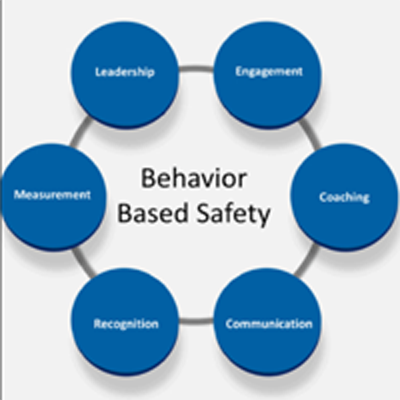Course
BEHAVIOUR SAFETY

Duration: Three To Ten Days
Behavioural Safety (or Behaviour-Based Safety, BBS) is a proactive approach to safety management that focuses on identifying and modifying unsafe behaviors in the workplace to prevent accidents and injuries. It is based on the principle that most workplace incidents are caused by unsafe behaviors rather than unsafe conditions.
???? What is Behavioural Safety?
Behavioural Safety is a process that:
-
Observes employee behavior during work tasks.
-
Identifies risky or unsafe behaviors.
-
Provides immediate, constructive feedback.
-
Reinforces safe behaviors through positive reinforcement.
???? Key Principles of Behavioural Safety
-
Focus on Behavior, Not Attitude
It's easier and more effective to observe and modify actions than to try to change personal beliefs. -
Positive Reinforcement Works Best
Recognizing and rewarding safe behavior is more effective than punishing unsafe behavior. -
Data-Driven Decisions
Observations are recorded, and data is used to identify trends and areas needing improvement. -
Employee Involvement is Crucial
Workers are more likely to accept and follow safety practices when they are part of the process. -
Continuous Improvement
Behavioral safety is not a one-time fix—it requires ongoing observation, feedback, and adaptation.
⚙️ Typical Behaviour-Based Safety Process
-
Identify Critical Behaviors
Focus on actions that have the highest potential for harm if performed unsafely. -
Develop Checklists
Simple observation checklists help monitor these behaviors consistently. -
Train Observers
Train selected workers or supervisors to observe peers and give constructive feedback. -
Conduct Observations
Observations should be regular, respectful, and seen as supportive, not disciplinary. -
Analyze Data
Look for trends in unsafe behaviors and identify causes. -
Implement Corrective Actions
Adjust processes, provide more training, or improve equipment as needed. -
Provide Feedback & Recognition
Acknowledge improvements and reinforce positive behavior.
✅ Benefits of Behavioural Safety
-
Reduces incidents and injuries.
-
Promotes a safety-first culture.
-
Encourages teamwork and communication.
-
Increases awareness of personal and peer behavior.
-
Supports compliance with safety regulations.
⚠️ Challenges of Behavioural Safety
-
Requires consistent management support.
-
Can be seen as micromanaging if poorly implemented.
-
Needs a non-punitive approach to be effective.
-
Requires cultural buy-in across all levels of the organization.
